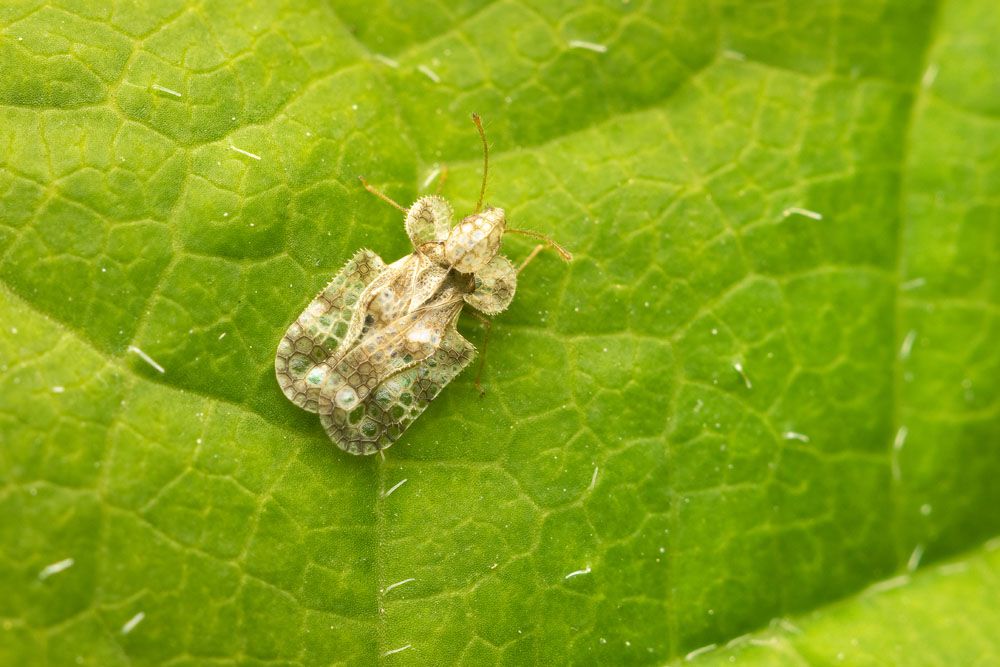
Chrysanthemum Lace Bug – Corythuca marmorata
Chrysanthemum Lace Bug: Appearance, Territory, Damage and Life Cycle
Latin Name: Corythuca Marmorata
Appearance: Since they normally do not cause plants any direct harm, lace bugs are not truly a serious insect pest of garden and landscape plants despite being prevalent across Kansas and eating on a range of plant species. However, dense populations may detract from some plant varieties’ attractiveness.
Corythuca marmorata, sometimes known as the chrysanthemum lace bug, is a sporadic pest of chrysanthemums. Its tiny (1/8 inch long), lacy adults and tiny, spiky larvae feed on the upper and bottom surfaces of leaves. The body of mature bugs are black, while their antennae and legs are yellow. The feet are a tan color. The wings and hood are coated by tiny, translucent cells that resemble lace, and the top has a conspicuously enlarged thorax (the hood). Although these patterns might vary, the wings contain four sporadic smoky-brown bands. Males often have marks that are more pronounced.
Hosts Plants: On mums, asters, golden rod, rag wood, sunflower, and other members of the aster family, chrysanthemum lace bugs are occasionally visibly common. Chrysanthemum lace bugs can leave leaves with obvious to severe pale speckling when they are in high numbers.
Territory: Europe and North America
Damage Insect Cause: The upper and lower leaf surfaces of the host plants are where the chrysanthemum lace insect feeds. There is yellow stippling on the foliage, which can turn into browned leaves and plant death. On the top and lower leaf surfaces, search for black frass drops. Frass droplets are placed on top of the eggs, which are injected into the leaf (mostly along the main veins). If you have a chrysanthemum lace bug infestation this year, keep an eye out for eggs, freshly hatched nymphs, and stippling damage the following spring.
An application of horticultural oil or insecticidal soap should lower the insect population if it is excessive and causing damage. Upper and lower leaf surfaces must be completely covered.
Life History and Habits: Before becoming adults, nymphs go through five instar stages. Skin sheds on the undersides of leaves are a sign that nymphs have matured into adults. The whole life cycle, from egg to adult, typically lasts 30 days. Although growth is dependent on temperature, there may be up to three generations every year. Corythucha spp. overwinters as adults in bark cracks and branch crotches, whereas Stephanitis spp. overwinters as eggs that are adhered to leaves. When the leaves erupt in the spring, adult activity starts.
